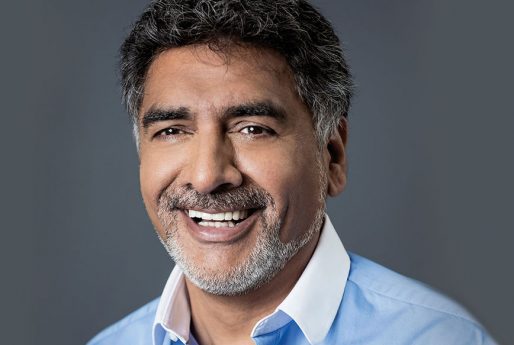 Muddled by mortgages? Don’t be! Our guide will help you find the one that’s right for your needs
Muddled by mortgages? Don’t be! Our guide will help you find the one that’s right for your needs
Mortgages have been hitting the headlines in recent months (and for all the wrong reasons) since the high- profile collapse of Northern Rock.
The bank lent too much money (that it didn’t have) and had to be rescued by the Bank of England to the tune of £50 billion. You must have been living on another planet if you missed the front page and TV news pictures of queues of people outside the bank’s branches as its customers went into panic mode.
At the peak of the housing boom, UK banks offered borrowers up to 120% of the value of a property with only self-certification of income. Northern Rock lent around 200,000 of these mortgages the two years before its collapse, and has now had to be nationalised.
In the face of this credit crisis, many banks have been withdrawing the mortgage products they offer and raising rates on others, as they’ve found it harder to borrow money.
However, there are still plenty of mortgages available. As has ever been the case, you simply have to do your research thoroughly in order to get the best mortgage for your situation.
Some lenders are now trying to lure customers back, and are offering mortgages with trimmed-down rates, so look around and you should still be able to find a good deal.
Be warned!
The mortgages-at-any-price view has imploded, but you still need to take care not over-stretch yourself.
l Always read the small print of the mortgage you are interested in. Check there are no penalties should you be in a position to pay off your debt suddenly or you want to switch providers at short notice.
l Be sensible about what you can afford to borrow. You want as much money as you can get, but think carefully about how the repayments will affect the way you live. It’s no life if you are living just to pay off this huge debt.
- Repayment The traditional mortgage, if you like. You make a regular monthly payment to the lender, which is made up of capital and interest. Provided you keep up the payments, at the end of the term you’ll have repaid the loan in full.
- Interest only You pay only the interest to your lender. Your monthly repayments will be lower, but at the end of the agreed term you’ll still owe the original amount. You’ll also pay considerably more interest than you would with a repayment mortgage. If you can’t repay your original loan at the end of the term, your mortgage lender can repossess your property.
These are only advisable if you really need to keep costs down for a few years. You’ll also need a savings plan to build a lump sum to pay off the mortgage at the end of the term. There are three ways of doing this:
- Endowment policies
- ISAs
- Pension plans
- Flexible This allows you to vary your payments within given parameters, and some lenders offer payment holidays. The flexible nature of such mortgages allows you to pay off your mortgage earlier if you can or take a break if you are struggling to make the monthly payments, perhaps through illness or redundancy.
- Cash-back In most cases, you pay the standard variable rate but you receive a cash lump sum at the start of your mortgage. This will often be an agreed percentage of the amount borrowed. An early settlement charge will apply.
- Base-rate tracker Your lender agrees a rate linked to the Bank of England base rate in the form of either a loaded premium or discount for a set period. The Bank of England reviews the base rate every month and then announces whether there will be a change or not.
- Combination As the name suggests, some lenders may allow you to combine both repayment methods. This may occur, for example, if you took out an endowment mortgage for your first home for £100,000 and you are looking at purchasing your second home at a cost of £150,000. You may want to keep your £100,000 endowment until the policy matures, but borrow the additional £50,000 as a repayment mortgage.
- Capped This will give you the best of both worlds between a fixed rate and a variable rate. The cap is basically a ceiling on the interest rate, above which it will not rise. On the other hand, if the normal variable rate falls below the capped rate then the variable rate will be charged. So, you have a guaranteed maximum rate with the benefit of a reduction in interest rate if this happens. There are catches – you will usually find that the cap is set at a higher rate than the best fixed rates for a similar period. So, for example, if a capped rate is offered for five years at 8%, you may find the best five-year fixed rate being offered is 7%. Secondly, watch out for redemption penalties. And finally, sometimes these products are sold as ‘cap and collar’ products. This means that, as well as a ceiling on the interest rate there is also a collar on the rate, below which it cannot fall.
- Discounted These are usually linked to the normal variable mortgage rate, but with a discount for a set period of time. This means that the interest rate you pay will fluctuate in line with base rates, but you will be guaranteed to receive the discount for a set period of time.
- Fixed rate These are available on a variety of terms and for most periods. At one end of the scale there are some very short-term deals fixed for, say, six months. At the other end of the scale there are offers that will fix the rate for the entire term of the mortgage. If you opt for a fixed rate, your decision will be based on two considerations.
The first is what you feel will happen to interest rates over the coming months and years, and secondly your approach to risk. If you like to budget with certainty then you will probably want to fix your repayments for a reasonable length of time. Equally important is the amount of leeway you have with your budget and whether you can afford to meet any increase in repayments.
- Stepped The rate may be either fixed or discounted. The term ‘stepped’ simply means the rate will change in steps at certain fixed intervals. For example, a stepped fixed rate may offer a rate of 3% in year one, 4% in year two and 6% per cent in year three – so you have a fixed rate for three years that increases in these three stages.
An alternative to this may be a stepped fixed rate where the interest rate decreases over the agreed term.
Get the right mortgage
To make sure you get the right mortgage, seek out professional advice
With so many mortgages to choose from, it’s wise to get help from someone who really knows what they’re doing. A mortgage adviser’s job is to find you the best deal out there, but there are two types of adviser – the one that works for the lender, and the one that works for you.
Each lender will have its own adviser who can give you detailed information on its lending criteria. But, bear in mind that this is not unbiased advice – it is simply a thorough description of one lender’s product range, and it won’t compare what it’s offering to what other lenders may be able to offer you.
An independent mortgage adviser, on the other hand, is exactly that. Independent. He or she will research the whole market and give you advice on a number of suitable mortgages for your circumstances.
Optimum Financial
Group Limited Heading
With guaranteed independent mortgage advice, Optimum Financial Group can search the whole market to save you time.
The qualified advisers are able to offer you advice on a wide range of financial services including mortgages, remortgages, protection and investment, loans and overseas property, and cater for your needs and circumstances. Each customer is allocated with a sales support progressor. Call free on 0800 1974267, for a no-obligation consultation with one its advisers.
Borrowing basics
The amount you can borrow varies between lenders, but the general rule of thumb is three and a half times your salary.
If you have a good mortgage broker, you may be able to get up to four, or even five, times your salary. Most lenders will lend up to 75% of a property’s value. Some will go up to 90% or 95%. And a few will loan 100% of its value, so no deposit is required. But with the latter, you will pay over the odds and will also be asked to buy mortgage indemnity insurance.
Before your mortgage is agreed, some lenders will ask you to fill out a detailed questionnaire in order to check your average outgoings per month.
Written By Chris Dighton and Jo Willacy
First Published in At Home with Andrew Winter, June 2008


